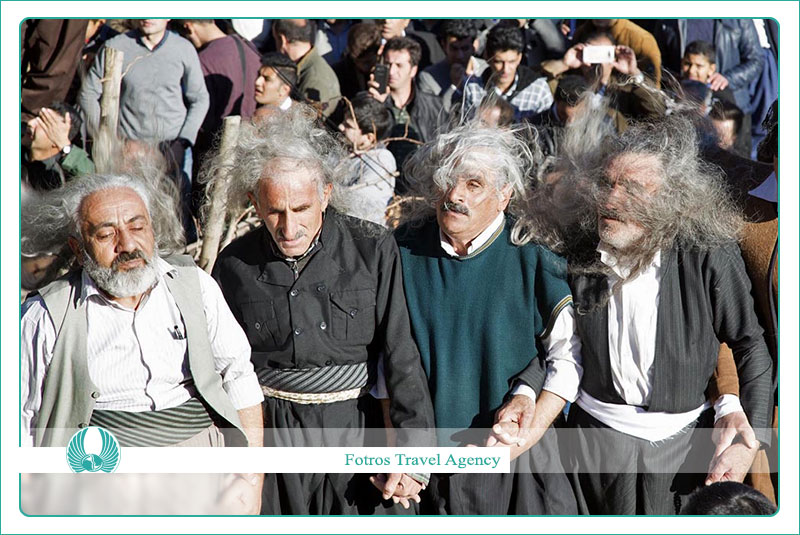
Pir Shalyar Festival
The festival of Pir Shalyar is an old traditional ceremony (go back to over 950 years), still alive in Uraman Takht (between the cities of Marivan and Paveh) which is a lesser-known place and a spectacular mountainous region in Kurdistan Province (in west of Iran) and it is held in the 40th day of winter.

The celebration is held in three stages, each in a day. The legend is about a wise man, called Pir Shalyar. His fame had reached as far as Bukhara (in today’s Uzbekistan), where its king was searching for a wise medicine man to cure his daughter, Shah Bahar Khatoon. The princess of Bukhara who was deaf mute, and her father announced whoever could cure the princess, gets permission to marry her, but the search was not successful. After knowing about Pir Shalyar, the king decided to send her daughter to Uraman, accompanied by a number of his relatives. As the canvoy got close to the destination, Shah Bahar Khatoon was able to hear the frightening roar of a demon. When they arrived the house of the Pir, the massive demon fell down the cliff and died at the Pir’s door. By this event, Shah Bahar Khatoon suddenly started to speak and everyone saw it as the miracle of Pir Shalyar. The beautiful princess became Pir’s wife and people of Uraman celebrated the wedding for several days.
This festival is filled with rhythmic music, religious chants and ritualistic dances. The ceremony is segregated into two main parts, first is the wedding celebration, held in early February, starting on a Wednesday. On this day, kids pick walnuts from Pir Shalyar’s garden to distribute around town. Children go door to door, give walnut to the families and announce that the celebration is coming; people of the house give them sweets and treats instead. The next morning, some cattle, selected by their owners to sacrifice, will be taken at the door of Pir Shalyar’s house. The meat of the animals will be used for a very large feast soup and the rest will be distributed among the people. While people in charge of cooking are preparing the traditional soup, the rest of the village go on their rooftops to watch the ritualistic dance of Dervishes to the music of Daf (a traditional drum that's so popular among the Kurd people).

This dance is very unique, as the young and old dervishes bend to the rhythm, flying their long hair. This ceremony continues till evening of Thursday. Friday is the day of prayers, citing poetry and respectfully handing Pir’s book, prayer beads and his shoe, as sacred objects for good luck. Until late in the evening, families sit in the house of Pir Shalyar and listen to stories and recitations. The interesting fact about this long lived ceremony is that each family is assigned a certain task as well as a designated seat in the house, and has respected it for centuries.


The second part is celebrated in early May each year, with celebration of spring, more Daf drumming and ritual dances, and finally by chipping a piece from a large stone at the graveyard where Pir Shalyar’s tomb is located. People believe that this little chip can help healing the ill, and it grows back on the main stone till next year.
What’s interesting about the ceremony of Pir Shalyar, is that two main religions of Zoroastrianism and Islam merge here. While people of Hawraman are Sunni Muslims, they still keep Zoroastrian traditions alive. "Pir" is the rank given to Zoroastrian priest, and "Shal" is a long cloth wrapped three times around waist representing “good thoughts, good words, and good deeds” (Zoroastrian concepts). Kurdish men still use Shal. Also, the sacred objects remained from Pir are treated the way sacred things are respected in Zoroastrianism. But, the sacrifice of animals, prayer and chants and also the style of burial of Pir Shalyar suggests its Islamic roots. Overall, the ceremony of Pir Shalyar is a representation of the long history in Kurdistan and the unity between Kurdish people of the region.
Related Tags:
We love to hear your comments